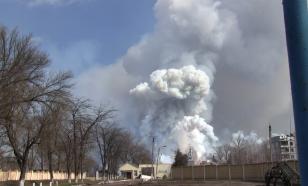Hurricane Frances: totals and damage
Battered, drenched but largely intact, Florida started counting the cost of Hurricane Frances yesterday, as four million people were left without power and thousands were forced to remain in emergency evacuation centres. Remarkably, no deaths were reported. The category 2 hurricane, which had prompted the largest evacuation in the state's history, arrived at the coast early yesterday morning near the town of Stuart, about 30 miles north of West Palm Beach. It was around here, where roofs were lifted from homes by the force of the storm, that the damage was most extensive. Elsewhere, it appeared that most places escaped with relatively little destruction. On a drive between West Palm Beach and Jupiter, the only obvious indications of damage were the limbs of trees scattered across the roads. There was no evidence, in this area at least, that the storm had done extensive structural damage to homes or buildings. For millions of people, hunkered down in hotels or emergency shelters, Saturday took an awfully long time to pass. The first signs of the storm were the winds that knocked out power and telephone lines as early as 10am. Gradually, throughout the afternoon, the storm worsened until, by 7pm, winds of more than 70mph were beginning to hit, bending trees and hurling debris. The worst of the storm came between midnight and 4am yesterday. The storm howled and roared, driving sheets of rain at all angles. At the Hampton Inn in West Palm Beach, the palm trees appeared to be bent double by the force of the wind and the rain. It was a testament to their flexibility that the vast majority of them survived. Although officials were still assessing the full extent of the damage, it seems clear that Hurricane Frances has been considerably less devastating than Hurricane Charley, which struck three weeks ago, killing 27 people and causing $7.4bn (Ј4.2bn) worth of damage. The storm shut down much of Florida, including airports and theme parks, at the start of the usually busy Labour Day weekend. Criminals seized the opportunity to profit from the lack of security and police reported that at least 12 people had been arrested for looting. Hurricane Frances, now downgraded to a category 1 storm, was making its way westwards across the state, and was expected to reach the Gulf of Mexico by nightfall, informs the News. According to Bloomberg, Allstate Corp., St. Paul Travelers Cos., Ace Ltd. and other insurers face as much as $10 billion in losses after hurricane winds battered Florida for second time in three weeks. Frances cut a 170-mile (274-kilometer) swath of hurricane- force winds across the state's central coast as it blew in from the Bahamas overnight, then continued to pound Florida for the rest of the day. Computer modeler Risk Management Solutions Inc. said the storm may cost anywhere from $2 billion to $10 billion. Insurers are having their costliest year since 2001, when the Sept. 11 attacks in the U.S. led to $26.5 billion in catastrophe claims, according to data company Property Claims Services. Hurricane Charley, with winds of 140 mph and a narrower path than Frances, resulted in about $6.8 billion in insured losses three weeks ago. The National Weather Service downgraded Frances to a tropical storm as winds fell to 70 mph (113 kph) at 5 p.m. local time. Its center was 20 miles east of Tampa. Frances came ashore with winds of 105 mph. Storm-weary Floridians emerged from east coast hurricane shelters on Sunday as Hurricane Frances moved to the state's west coast after whipping off roofs, washing sailboats ashore and cutting power to 4 million people. The hurricane virtually shut down the fourth-largest U.S. state, home to 16 million people, for two days and promised damage not only to buildings but to the state's economy on the usually busy Labor Day weekend, normally an end-of-summer bonanza for Florida's $53 billion tourism industry. The state's largest population center and big Latin American business hub, Miami, escaped the worst of the storm but the impact on Orlando, the main tourist playground, was uncertain as massive Frances lumbered across central Florida. The $9.1 citrus industry, badly damaged by Hurricane Charley three weeks ago, was likely to take another hard blow as the storm moved across the state's best growing regions. Even as the large and slow-moving storm, from which 2.5 million people had been urged to flee, edged toward Tampa on the west coast, residents of east coast towns emerged from their hurricane cocoons to survey the damage, reports Reuters.
Read earlier news stories by PRAVDA.Ru
Bermuda Triangle Is Not a Mystery Perhaps - PRAVDA.Ru
Pravda.RU Storm rages in Greece
Subscribe to Pravda.Ru Telegram channel, Facebook, RSS!


